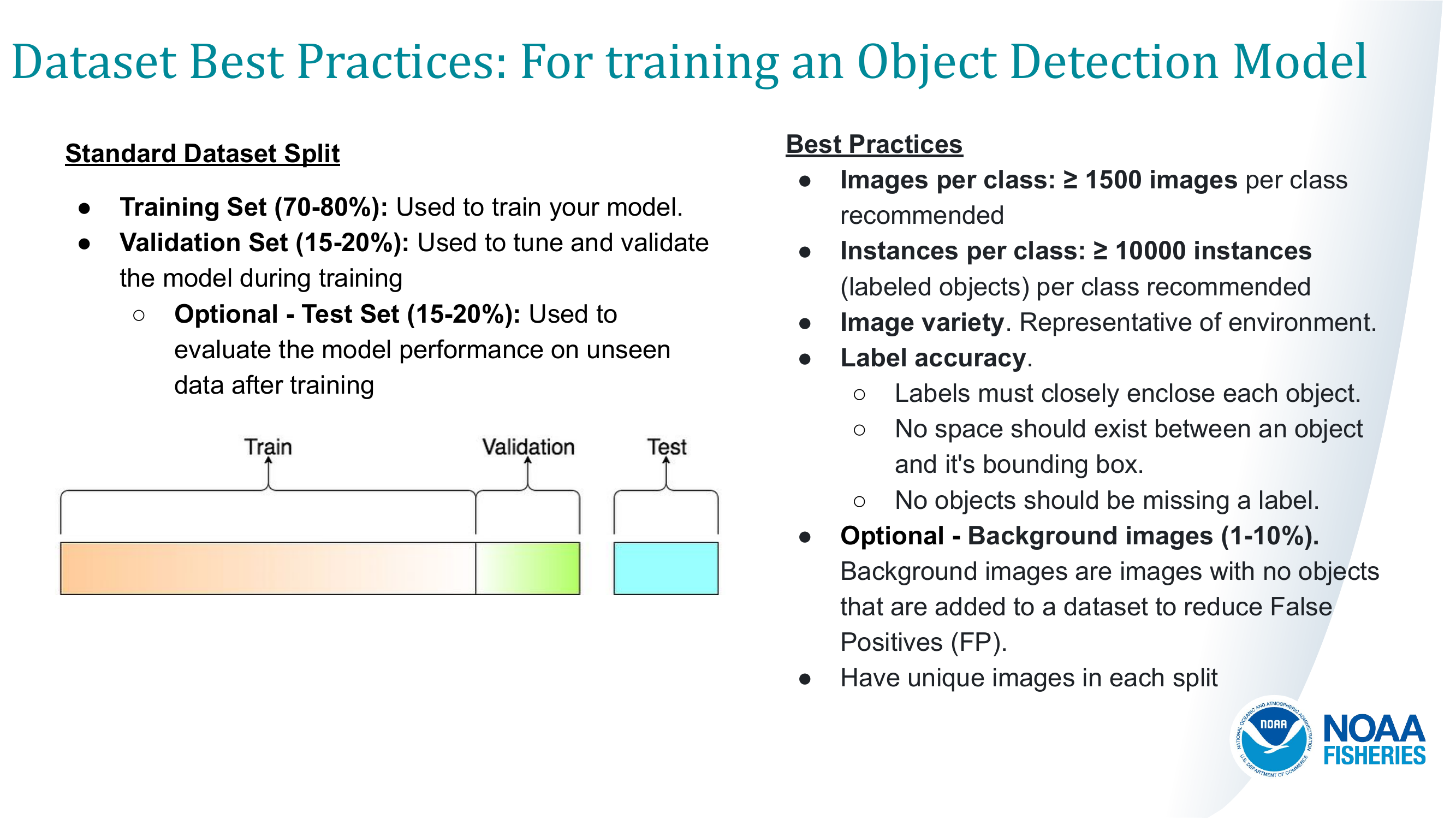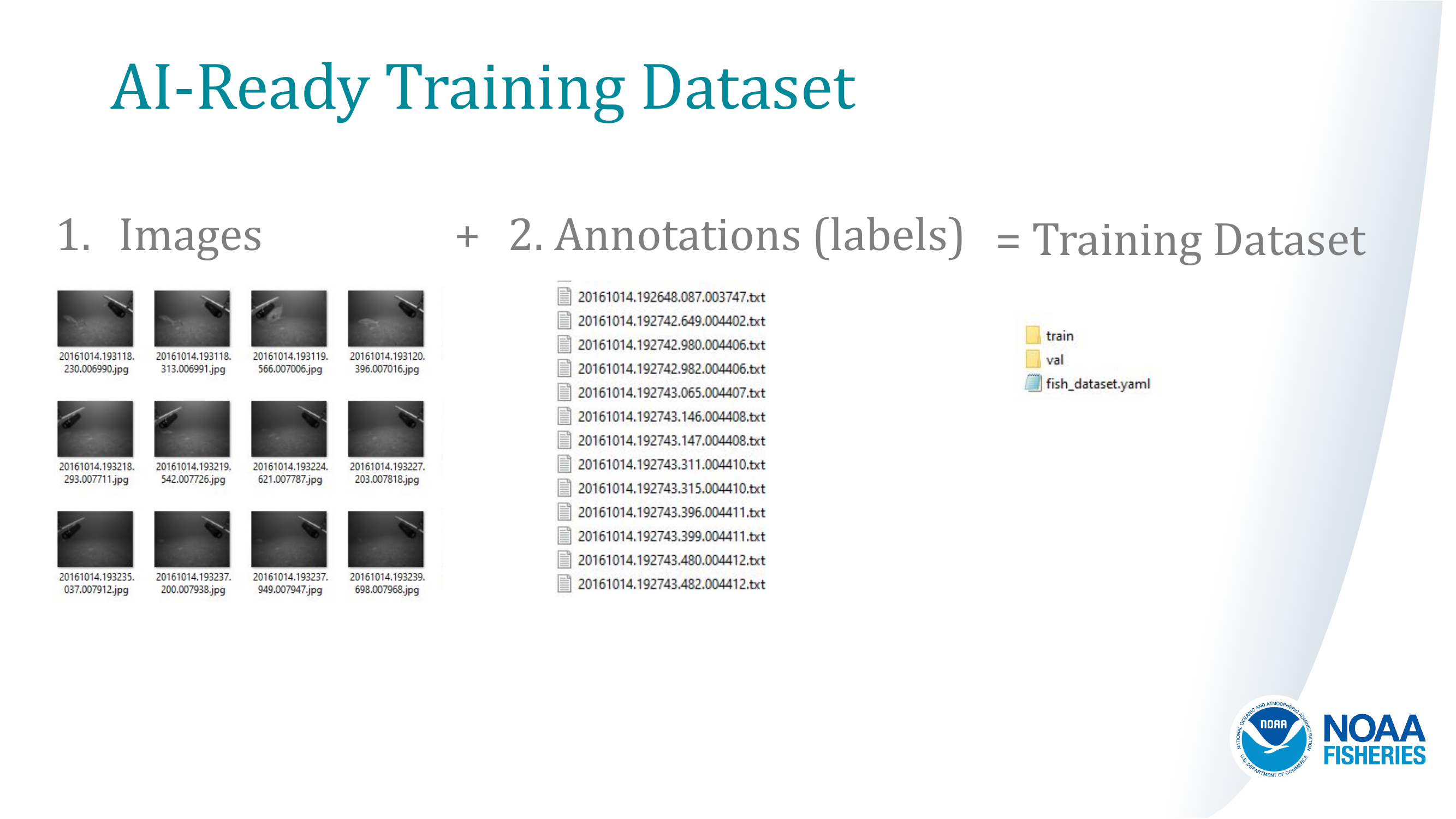16. Dataset Prep#
16.1. Dataset Basics:#
Images per class. | ≥ 1500 images per class recommended
Instances per class. | ≥ 10000 instances (labeled objects) per class recommended
Image variety.
Must be representative of the environment.
recommended: images from different regions, seasons, conditions, lighting, angles, different sources
Label consistency.
All instances of all classes in all images must be labelled.
Partial labelling will impact performance.
Label accuracy.
Labels must closely enclose each object. No space should exist between an object, and it’s bounding box. No objects should be missing a label.
Background images.
Background images are images with no objects that are added to a dataset to reduce False Positives (FP).
16.2. Split Dataset for Training#
Labeled Data is split into three parts:
Training Dataset: Used to train the model.
Validation Dataset: Used to validate and tune model.
Test Dataset: Used to evaluate the final model.
graph TD;
A[Labeled Data] --> B[Training Dataset]
A --> C[Validation Dataset]
A --> D[Test Dataset]
B --> E[Used to train the model]
C --> F[Used to validate and tune model]
D --> G[Used to evaluate the model]



16.3. Other Helpful Dataset Prep Tasks#
Develop a Benchmark Test Dataset
Consider Data Augmentation
Check Bias and Balance
